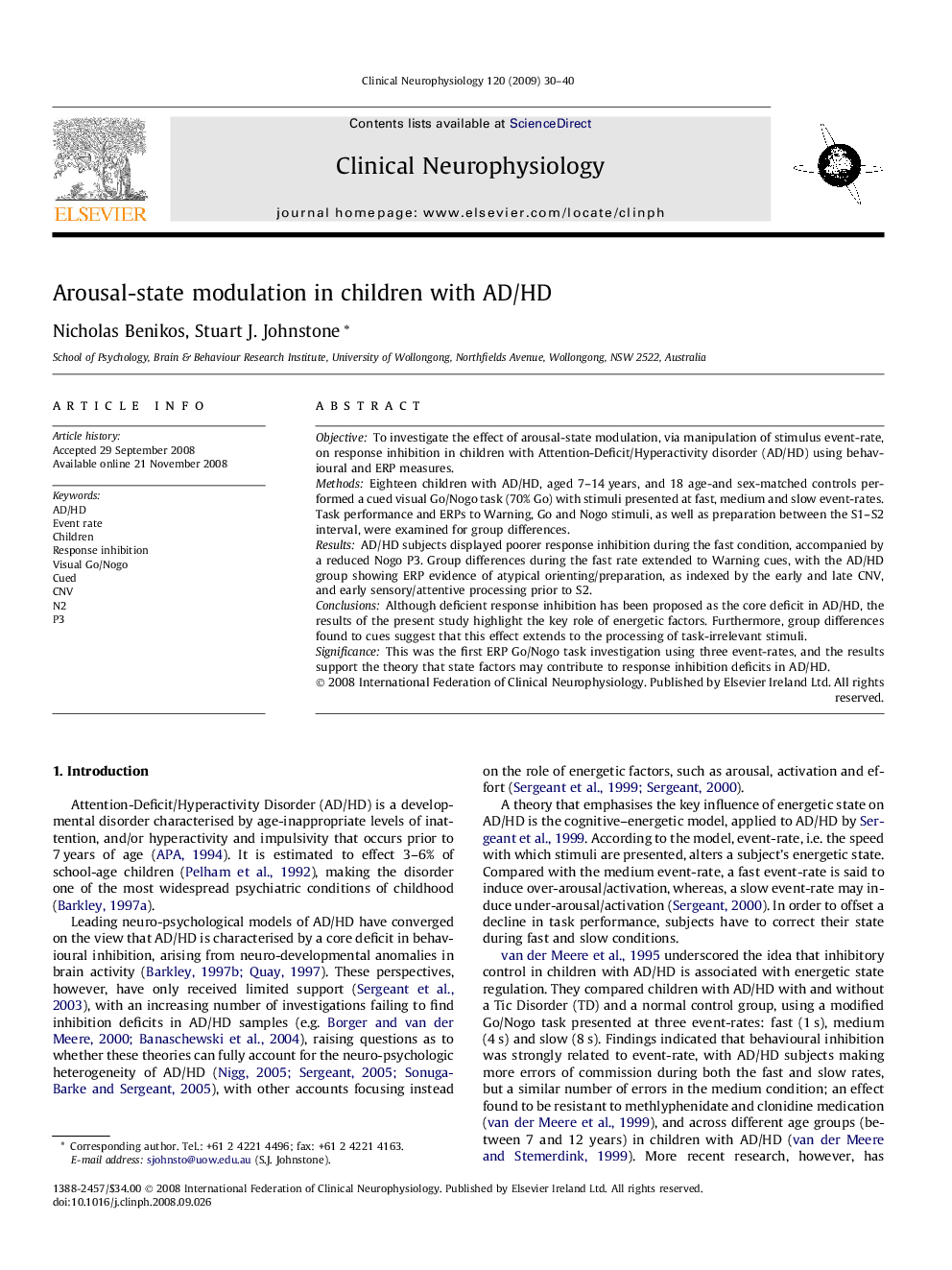| Article ID | Journal | Published Year | Pages | File Type |
|---|---|---|---|---|
| 3046695 | Clinical Neurophysiology | 2009 | 11 Pages |
ObjectiveTo investigate the effect of arousal-state modulation, via manipulation of stimulus event-rate, on response inhibition in children with Attention-Deficit/Hyperactivity disorder (AD/HD) using behavioural and ERP measures.MethodsEighteen children with AD/HD, aged 7–14 years, and 18 age-and sex-matched controls performed a cued visual Go/Nogo task (70% Go) with stimuli presented at fast, medium and slow event-rates. Task performance and ERPs to Warning, Go and Nogo stimuli, as well as preparation between the S1–S2 interval, were examined for group differences.ResultsAD/HD subjects displayed poorer response inhibition during the fast condition, accompanied by a reduced Nogo P3. Group differences during the fast rate extended to Warning cues, with the AD/HD group showing ERP evidence of atypical orienting/preparation, as indexed by the early and late CNV, and early sensory/attentive processing prior to S2.ConclusionsAlthough deficient response inhibition has been proposed as the core deficit in AD/HD, the results of the present study highlight the key role of energetic factors. Furthermore, group differences found to cues suggest that this effect extends to the processing of task-irrelevant stimuli.SignificanceThis was the first ERP Go/Nogo task investigation using three event-rates, and the results support the theory that state factors may contribute to response inhibition deficits in AD/HD.
